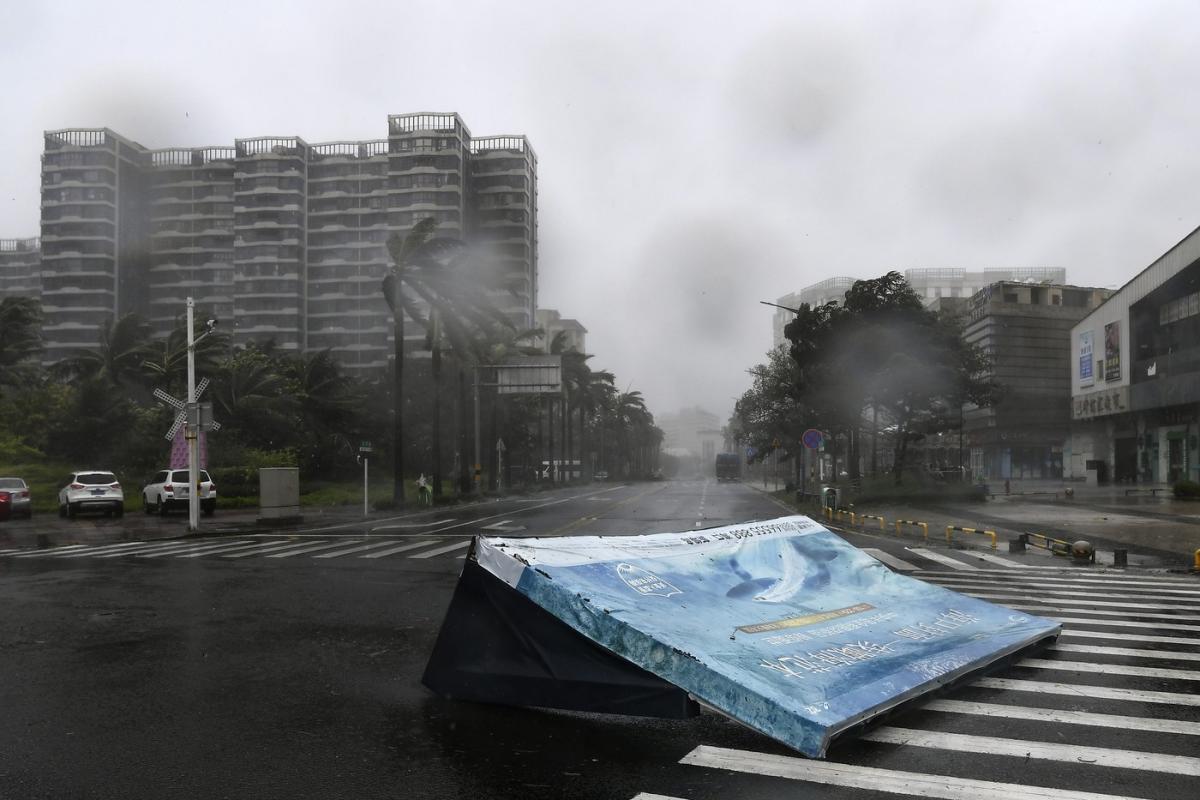Sports
Vietnamese authorities say Typhoon Yagi has killed at least 4 and injured 78 others

HANOI, Vietnam (AP) — Vietnamese authorities say Typhoon Yagi has killed at least four people and injured 78 others after making landfall Saturday afternoon in the north of the country.
Yagi, described by Vietnamese meteorological officials as “one of the most powerful typhoons in the region over the past decade,” made its way to the Southeast Asian country after it left three people dead and nearly a hundred others injured in the Chinese province of Hainan.
The typhoon landed at Vietnam’s coastal provinces of Quang Ninh and Haiphong with wind speeds of up to 149 kilometers per hour (92 miles per hour), state media reported. Before landing, strong winds felled a tree, killing a woman in the capital, Hanoi, local media said Saturday.
Quang Ninh is home to the UNESCO World Heritage site Ha Long Bay, known for its many towering limestone islands. Hundreds of cruises were canceled at the popular site before the typhoon landed, according to local media. Haiphong is an industrial hub, home to large factories, including EV maker VinFast and Apple supplier Pegatron.
The typhoon has also triggered power outages in large parts of Quang Ninh and Thai Binh provinces.
Earlier, the government issued several alerts, and those vulnerable to floods or landslides were evacuated. Four airports were shuttered, including in Hanoi, and Haiphong.
Authorities pruned trees in Hanoi to make them less susceptible to falling, but wind and rain knocked over several along with billboards in northern cities. Local media reported that many moored boats were swept out to sea.
“I am going to stay inside and try and stay safe with my family,” said Bao Ngoc Cao, 24, a businesswoman from Hanoi. She added that the last time a typhoon this strong hit Vietnam was in 2013 and that storms usually weaken before reaching the capital. “But we still need to be prepared.”
On Friday afternoon, Yagi struck the Chinese city of Wenchang in Hainan province with wind speeds of up to about 245 kph (152 mph) near its center. Authorities said the typhoon has affected over 1.2 million people as of noon Saturday, according to the local Global Times newspaper.
Some 420,000 Hainan residents were relocated before the typhoon’s landfall. Another half a million people in Guangdong province were evacuated before Yagi made a second landfall in the province’s Xuwen County on Friday night.
Meanwhile, the meteorological observatory of the city of Haikou downgraded its typhoon signal from red to orange on Saturday, as it moved further away.
Before leaving Hong Kong, Yagi forced more than 270 people to seek refuge at temporary government shelters on Friday, and over 100 flights in the city were canceled due to the typhoon. Heavy rain and strong winds felled dozens of trees, and trading on the stock market, bank services and schools were halted.
Yagi was still a storm when it blew out of the northwestern Philippines into the South China Sea on Wednesday, leaving at least 20 people dead and 26 others missing mostly in landslides and widespread flooding and affecting more than 2.3 million people in northern and central provinces.
More than 82,200 people were displaced from their homes in Philippine provinces, and classes, work, inter-island ferry services and domestic flights were disrupted for days, including in the densely populated capital region, metropolitan Manila.
Benjamin Horton, director of the Earth Observatory of Singapore said that storms like typhoon Yagi were “getting stronger due to climate change, primarily because warmer ocean waters provide more energy to fuel the storms, leading to increased wind speeds and heavier rainfall.”
Climate change was also causing storms to potentially move to different locations with studies by the observatory showing that the latitude where storms peaked in their intensity was shifting, exposing newer areas to the impacts of storms, he added.
Horton said that protecting natural systems ranging from reefs to rivers while building structures that were more resilient to strong winds and flying debris and improving existing infrastructure were all measures that could help countries better deal with strong typhoons.
___
Soo reported from Hong Kong. Associated Press writer Jim Gomez in Manila, Philippines, contributed to this report.
Zen Soo And Aniruddha Ghosal, The Associated Press




